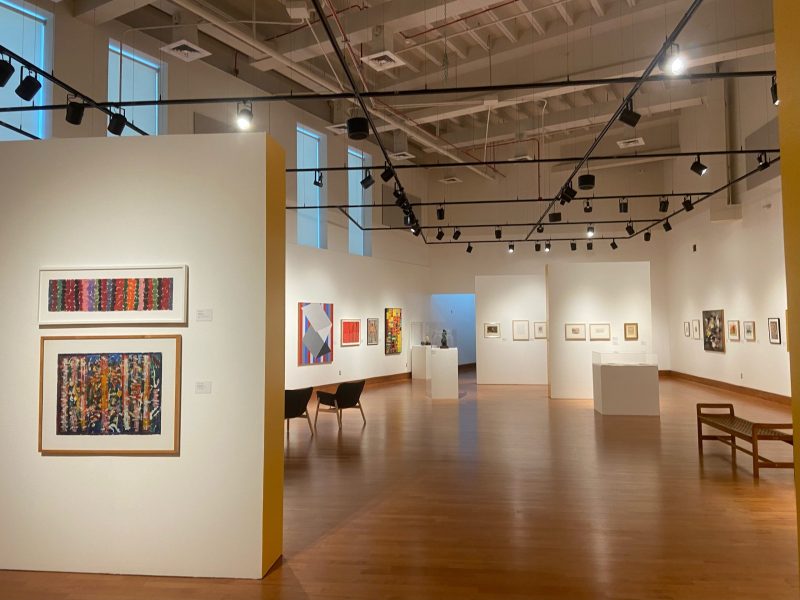Shrouded in darkness, Paul Morella descended from the back of the Mulitz-Gudelsky Theatre Lab with a top hat on his head and a candle in his hand. He moved slowly, step by step, his voice swirling with an air of mystery as he took his place on the stage before a sold-out crowd.
There he set the scene for perhaps one of the most unorthodox retellings of Charles Dickens’ A Christmas Carol, put on by Olney Theatre Center.
That’s because, much like the original performances Dickens gave in the 19th century, Morella was the only person to take the stage that night.
For over two hours, Morella assumed every role in the classic holiday tale, bringing the audience through a tumultuous journey with little more than a couple of props, pristine production effects and his raw portrayal of characters. It was, to say the least, an engrossing experience.
The fear with one-man shows, of course, is that they grow dull. But that was never the case with Morella’s A Christmas Carol: A Ghost Story of Christmas. From the beginning, he managed to bring each character to life, each with their own dynamism and nuances.
In the opening scene, he captured the icy hospitality of Ebenezer Scrooge, his voice shaking as if the man himself was withering away underneath the weight of his own sins. He then transitioned to the warm kindness of Scrooge’s nephew, Fred, whom he played with a glowing generosity. Morella managed to partake in both parts of a conversation with little difficulty — transforming into Fred to plead Scrooge to attend his Christmas dinner and then Scrooge to tell Fred the iconic “bah-humbug!” — never leaving the audience confused about who was saying what.
It is strange, of course, to witness a man talking to himself; it is a jarring type of performance that takes some time to get used to. But once you accepted what was unfolding on stage, it almost seemed preferable to having a full cast of characters. Having just one character on the stage leaves much to the imagination, enabling every audience member to have their own unique vision of the cast of characters. Easily espousing the colorful descriptions Dickens crafted in his novella, Morella provided enough context for his characters to adopt important traits from the story while allowing those watching to perceive the characters as they saw fit.
This was especially interesting when Scrooge began to encounter the other-worldly spirits, starting with his deceased companion Jacob Marley, now condemned to haunt the Earth for his mortal transgressions, and the Ghosts of Christmas Past, Present and Future. Few productions of A Christmas Carol can convey the ethereal trips Scrooge went on with his various astral guides, so leaving them completely up to the imagination proved intensely engaging.
But production effects proved the best part of the show. The rehearsal for the special effects were probably meticulous. As Morella depicted a back-and-forth dialogue between Scrooge and Marley, his voice echoed with a demented effect when he spoke as Marley, a vocal manipulation that was absent during his terrified comments as Scrooge. In other moments, lights flashed with pinpoint accuracy as Morella transitioned from Scrooge to one of the ghosts of Christmas, an incredible feat.
I would be lying if I said the show was never awkward. Certain moments proved odd, one example being when Morella acted like Scrooge’s young sister Fran with an exuberant schoolgirl quality as she informed her brother that he can return home for Christmas. The same can be said for the scene where he depicted both Scrooge and his soon-to-be ex-fiance Belle as she relinquished her engagement ring and ended their relationship, or when he sang a song as the young Tiny Tim with childlike innocence. There comes a point when a man speaking to himself, especially when alternating rapidly between such different characters in intimate moments, seems a bit strange.
This type of A Christmas Carol is definitely a new experience. As someone who had performed in a few productions of it myself, it proved to be the most unique adaptation of the show I have ever witnessed — and I once saw a Steampunk version of it. For that, and the mesmerizing way Morella could switch from morose tears to joyous laughter in a single instant, the show and its lone actor deserve praise.



